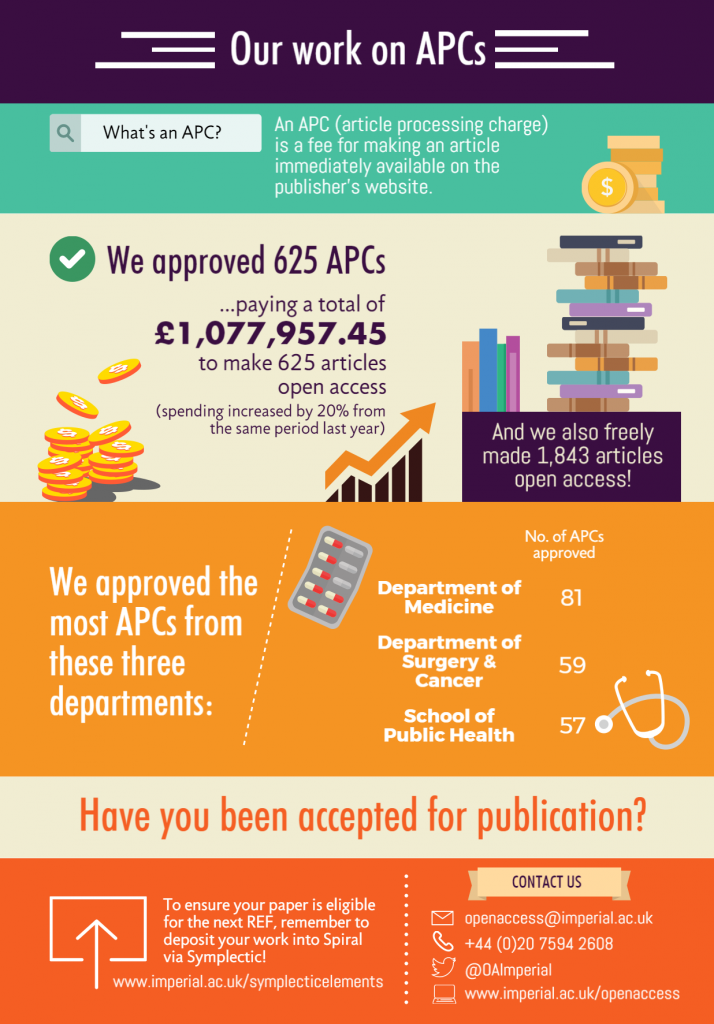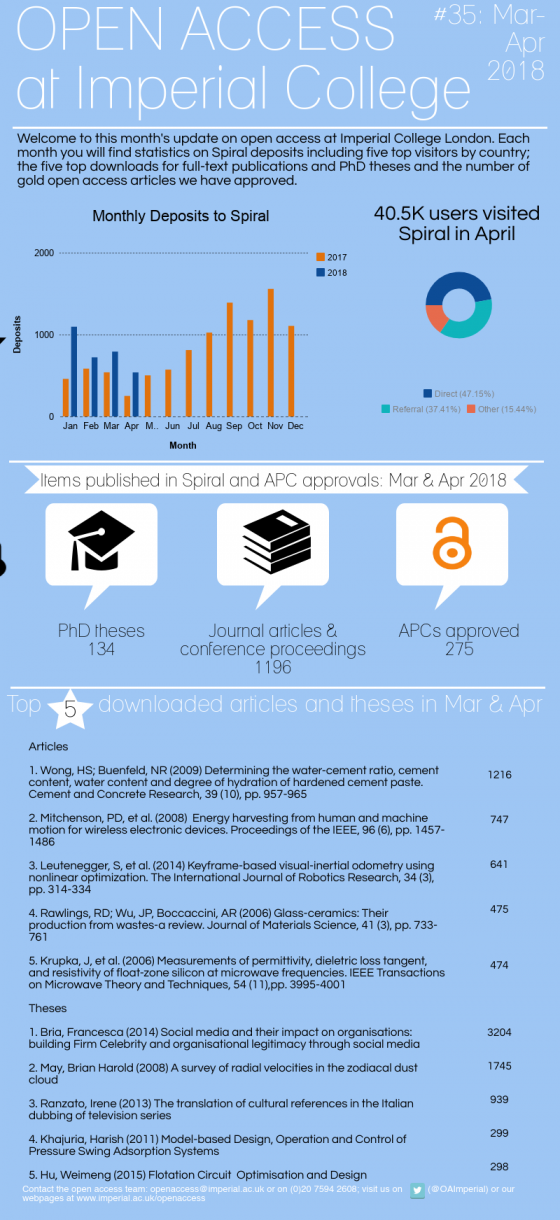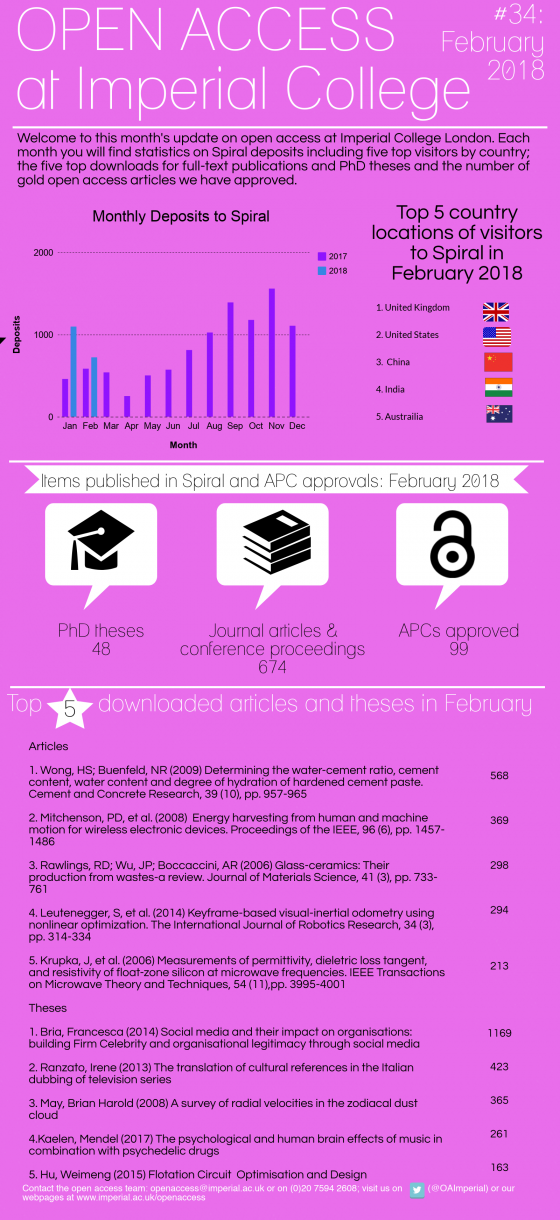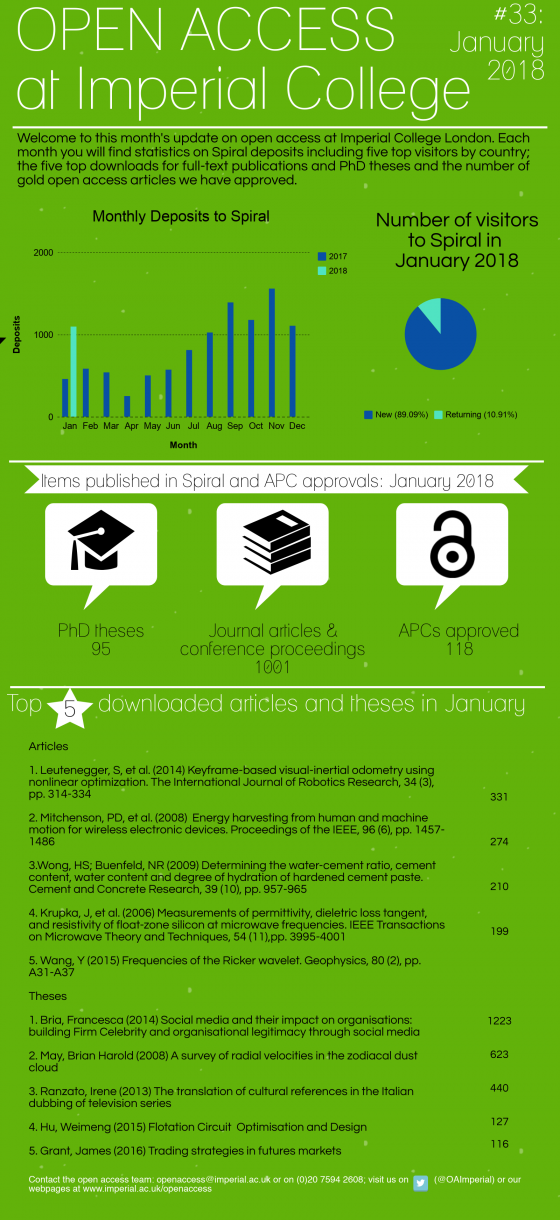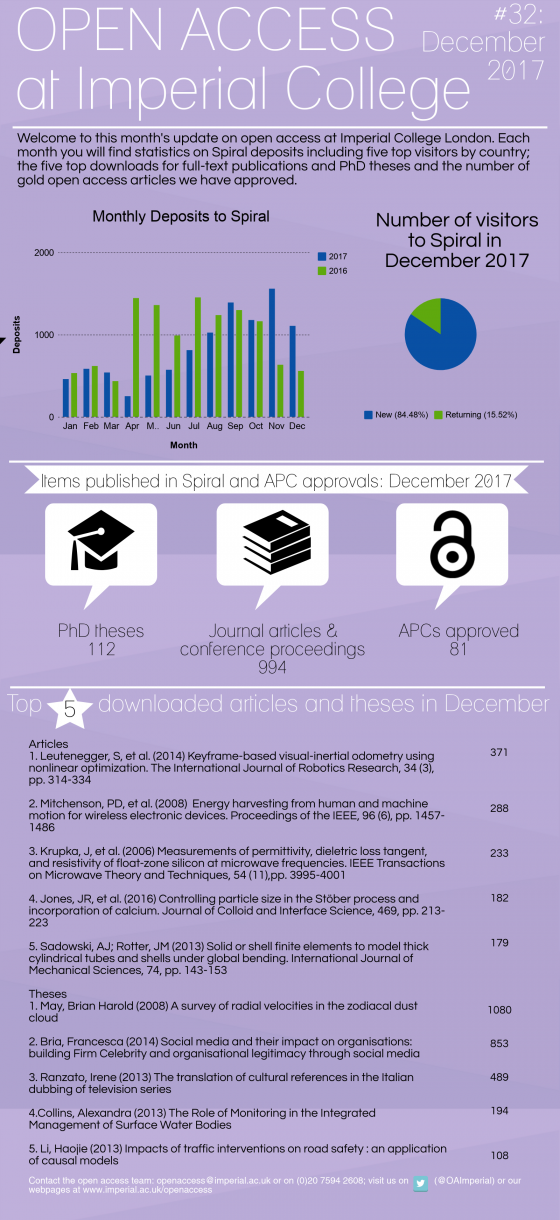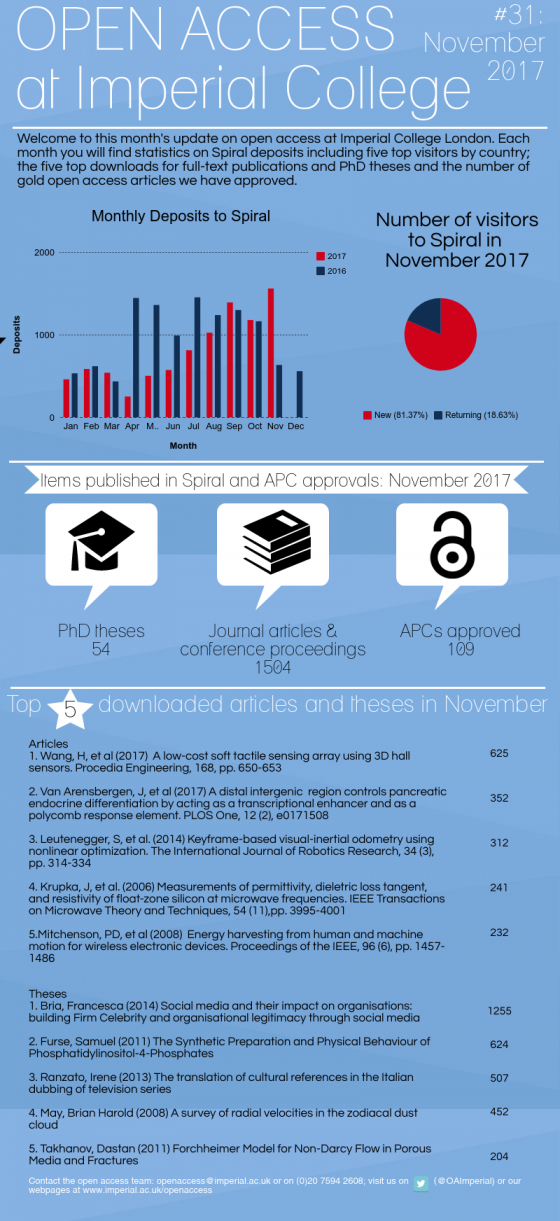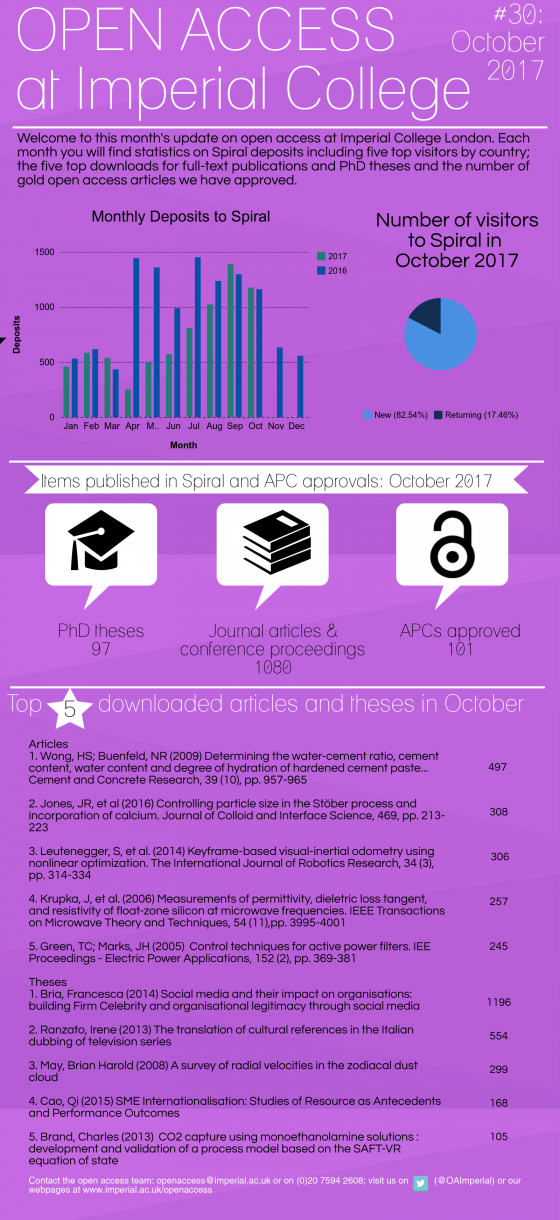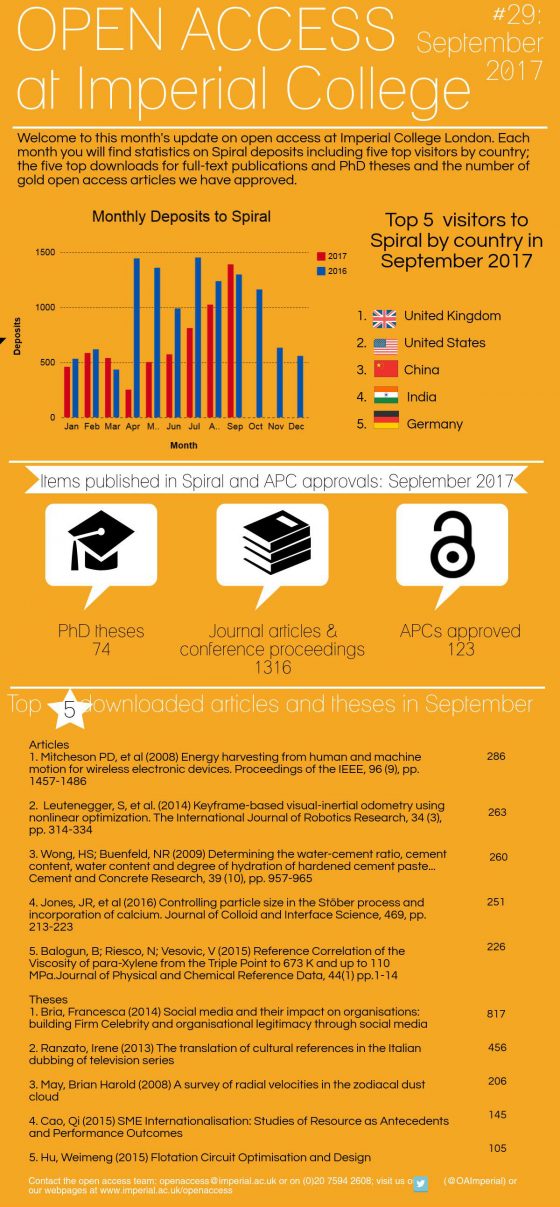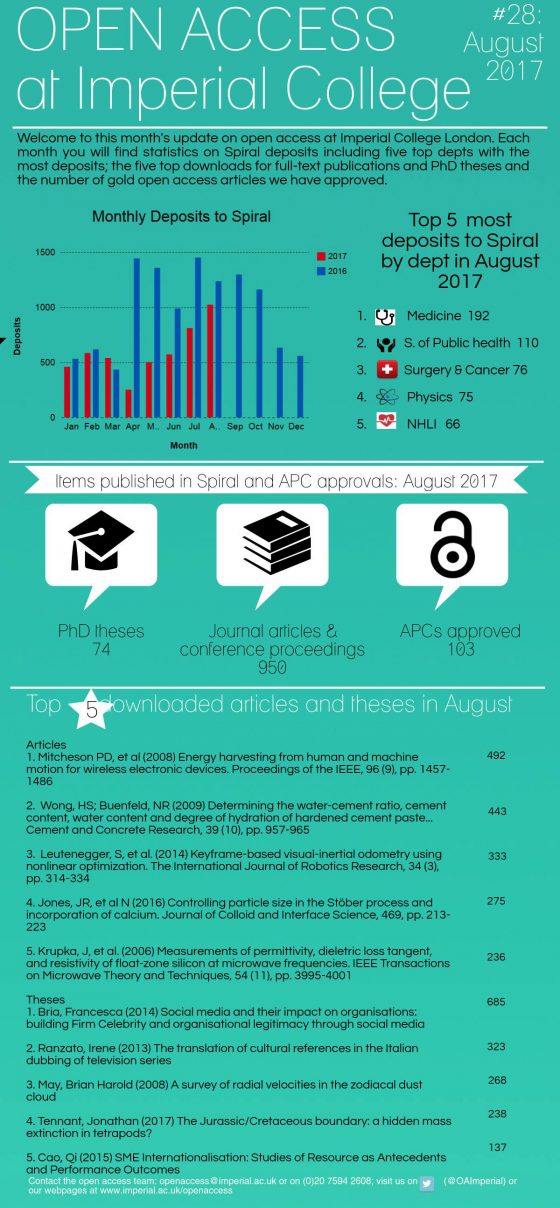Blog posts
Open access in numbers – February 2018
Open access outside academia
Emily Nunn’s recent talk for the London Open Access Network (LOAN) meeting at the British Library, titled “Open Access outside academia: exploring access to medical and educational research for non-academics” provided an interesting opportunity to look at how the non-academic public access, view, understand and use academic research.
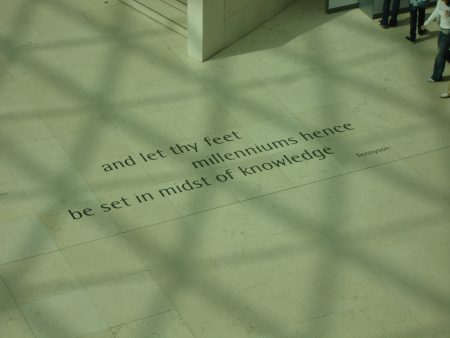
The talk was based on Emily’s PhD research investigating the impact of open access publishing outside traditional academic communities and focussed on patients and workers in the education/ charity/ medical sector. The motivations behind accessing research ranged from health diagnosis, “naturally curious”, to tasks at work, and social media coverage.
The access to research differed greatly among research participants, from those who had institutional access via their employer (such as a library), access via university, to those who relied on personal networks such as friends in academia. Although most users tend not to pay for paywalled content, there was little to no knowledge or familiarity with open access tools such as Unpaywall (a browser plug-in that locates free, legal, green open access versions of research when available). Workers in the charity sector were aware of/ had used pirate websites to access research.
Research participants also mentioned that they sometimes found it difficult to understand and interpret academic language, statistics etc. which could be a further barrier to accessing research. There was also no mention of the “Request a copy button” as most users were relying on Google for their searches. There was an exciting discussion around whether libraries should lead the way in research literacy, and helping the lay public to understand and interpret research. A suggestion was to include lay summaries in scientific articles and also to embed open access links within lay articles.
Knowledge of open access was quite low, among the research participants, and limited to only being a way of accessing research; there was no discussion or mention of re-use by any of the participants. There was very little understanding of the green and gold routes to open access, with the public not getting to green articles easily, most reached journal websites.
Interestingly, there was a false understanding of scholarly publishing, with research participants believing that articles were paywalled so as to allow the author/ researcher to recuperate their costs themselves. (rather than the publisher profiteering!)
The talk lead to a lively discussion among the members of LOAN, with those present wondering if university and public libraries should be doing more open access advocacy to engage the wider public.
Anisha Ahmed
19 February 2018
Open access in numbers – January 2018
Open access in numbers – December 2017
Open access in numbers – November 2017
Open access in numbers – October 2017
Open access in numbers – September 2017
Open access in numbers – August 2017
Article Processing Charges and open access January to July 2017
